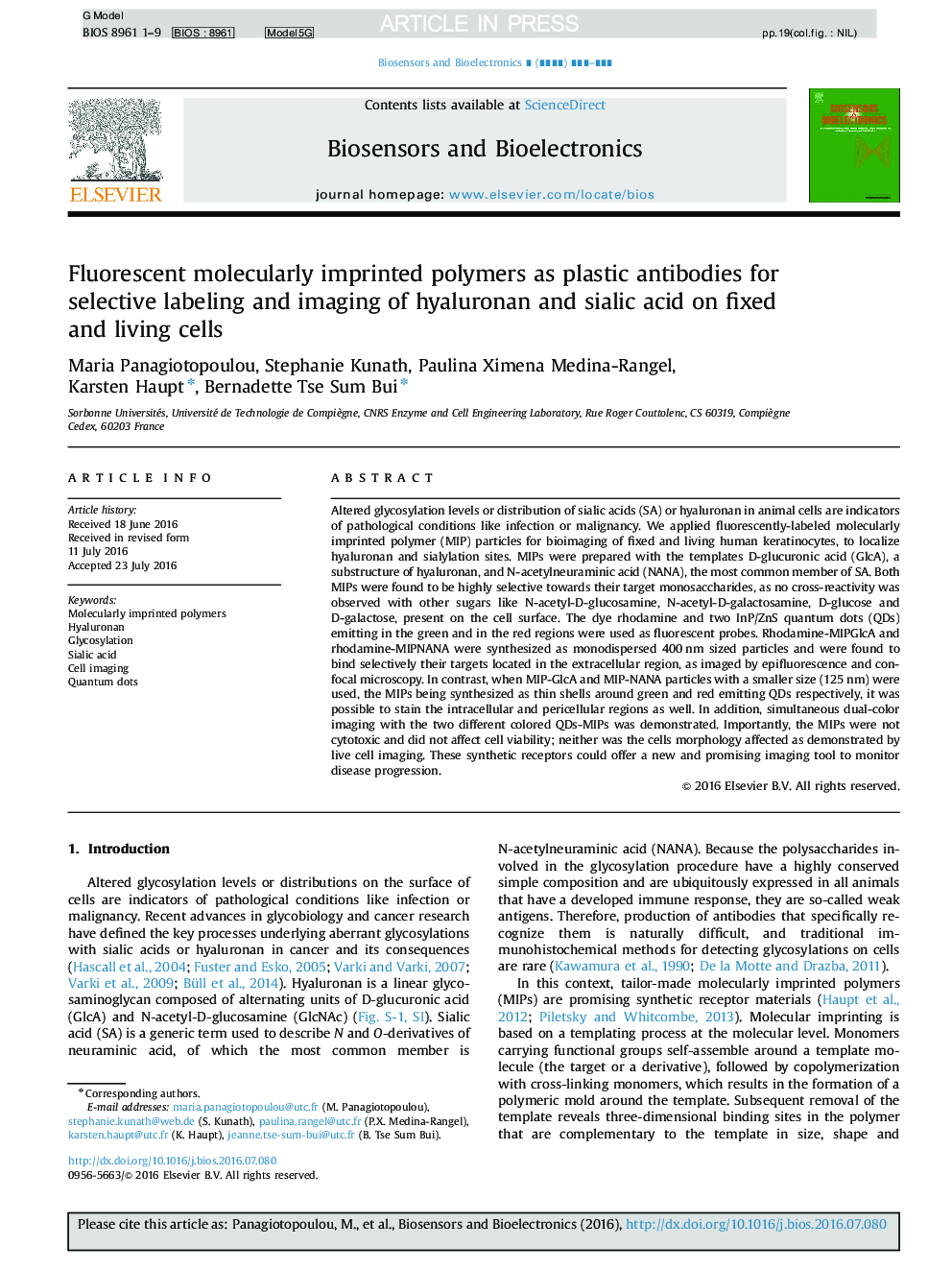| کد مقاله | کد نشریه | سال انتشار | مقاله انگلیسی | نسخه تمام متن |
|---|---|---|---|---|
| 5031400 | 1470943 | 2017 | 9 صفحه PDF | دانلود رایگان |
عنوان انگلیسی مقاله ISI
Fluorescent molecularly imprinted polymers as plastic antibodies for selective labeling and imaging of hyaluronan and sialic acid on fixed and living cells
ترجمه فارسی عنوان
پلیمرهای فلورسنت مولکولی به عنوان آنتی بادی های پلاستیکی برای نشانه های انتخابی و تصویربرداری از هیالورونان و اسید سیالیک در سلول های ثابت و زنده
دانلود مقاله + سفارش ترجمه
دانلود مقاله ISI انگلیسی
رایگان برای ایرانیان
کلمات کلیدی
پلیمرهای مونومر شده هیالورونان، گلیکوزیلت، اسید سیالیک، تصویربرداری سلول، نقاط کوانتومی،
موضوعات مرتبط
مهندسی و علوم پایه
شیمی
شیمی آنالیزی یا شیمی تجزیه
چکیده انگلیسی
Altered glycosylation levels or distribution of sialic acids (SA) or hyaluronan in animal cells are indicators of pathological conditions like infection or malignancy. We applied fluorescently-labeled molecularly imprinted polymer (MIP) particles for bioimaging of fixed and living human keratinocytes, to localize hyaluronan and sialylation sites. MIPs were prepared with the templates D-glucuronic acid (GlcA), a substructure of hyaluronan, and N-acetylneuraminic acid (NANA), the most common member of SA. Both MIPs were found to be highly selective towards their target monosaccharides, as no cross-reactivity was observed with other sugars like N-acetyl-D-glucosamine, N-acetyl-D-galactosamine, D-glucose and D-galactose, present on the cell surface. The dye rhodamine and two InP/ZnS quantum dots (QDs) emitting in the green and in the red regions were used as fluorescent probes. Rhodamine-MIPGlcA and rhodamine-MIPNANA were synthesized as monodispersed 400 nm sized particles and were found to bind selectively their targets located in the extracellular region, as imaged by epifluorescence and confocal microscopy. In contrast, when MIP-GlcA and MIP-NANA particles with a smaller size (125 nm) were used, the MIPs being synthesized as thin shells around green and red emitting QDs respectively, it was possible to stain the intracellular and pericellular regions as well. In addition, simultaneous dual-color imaging with the two different colored QDs-MIPs was demonstrated. Importantly, the MIPs were not cytotoxic and did not affect cell viability; neither was the cells morphology affected as demonstrated by live cell imaging. These synthetic receptors could offer a new and promising imaging tool to monitor disease progression.
ناشر
Database: Elsevier - ScienceDirect (ساینس دایرکت)
Journal: Biosensors and Bioelectronics - Volume 88, 15 February 2017, Pages 85-93
Journal: Biosensors and Bioelectronics - Volume 88, 15 February 2017, Pages 85-93
نویسندگان
Maria Panagiotopoulou, Stephanie Kunath, Paulina Ximena Medina-Rangel, Karsten Haupt, Bernadette Tse Sum Bui,
